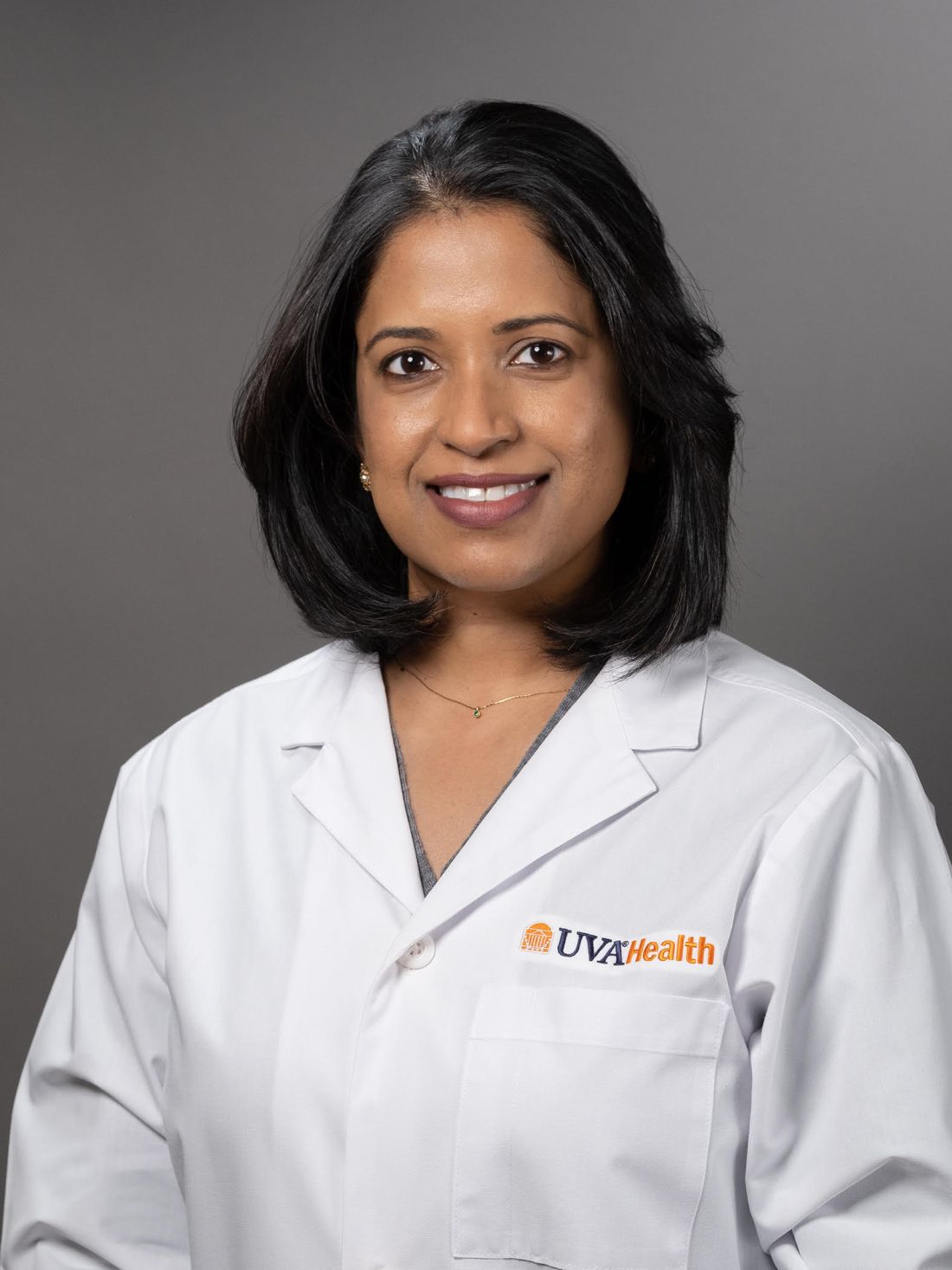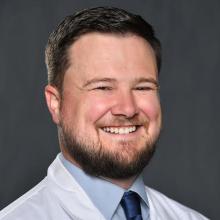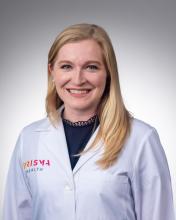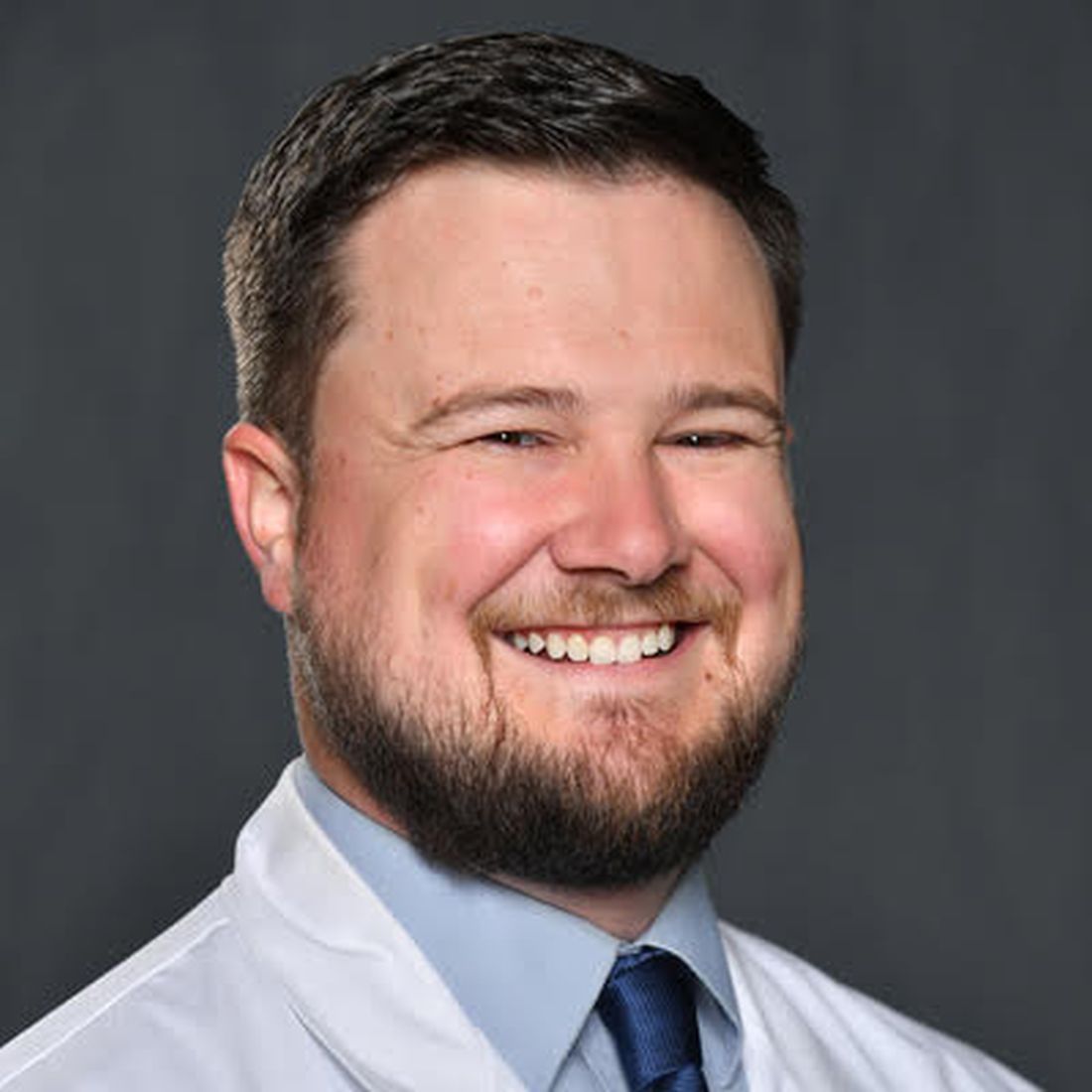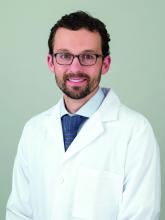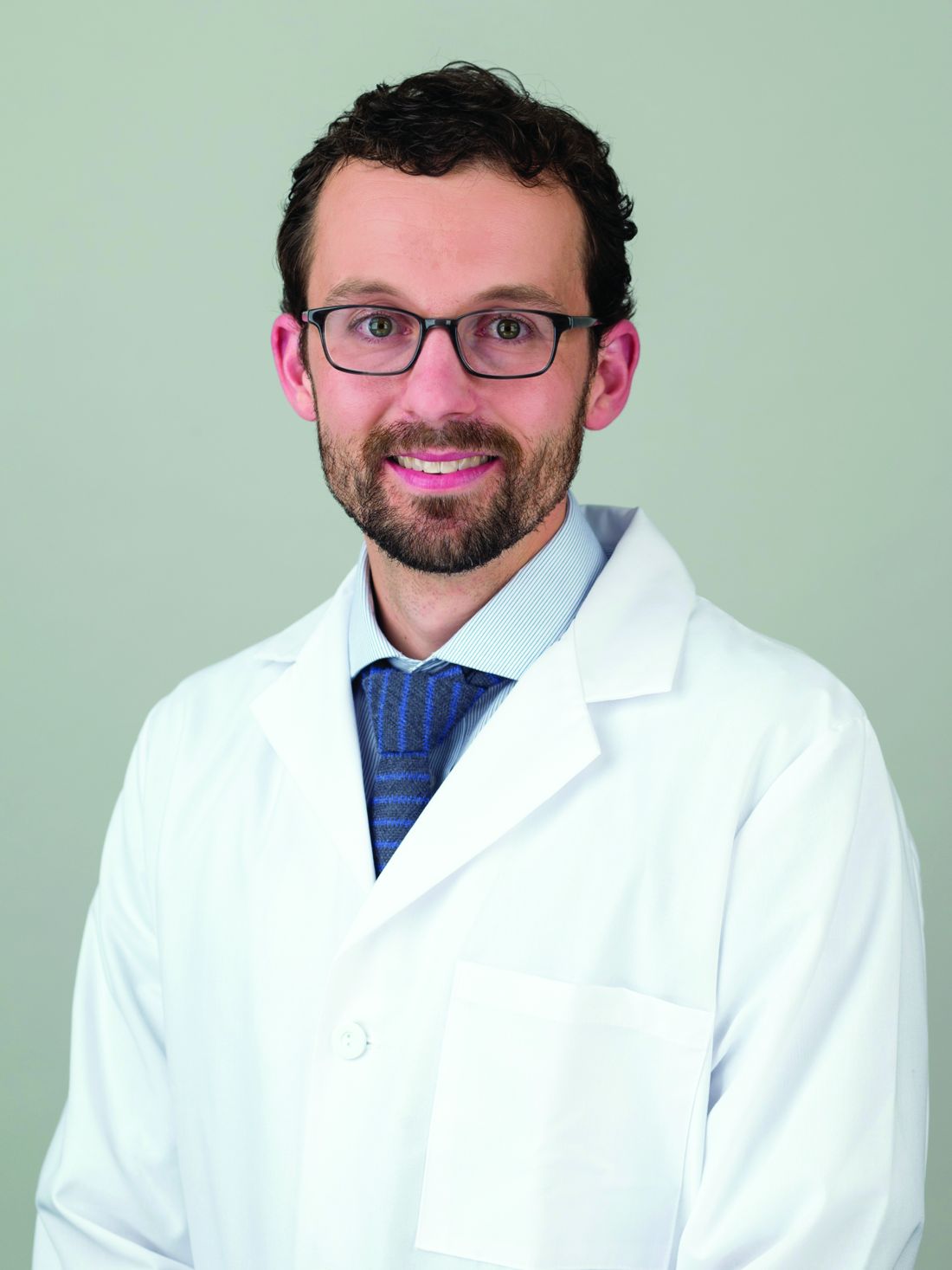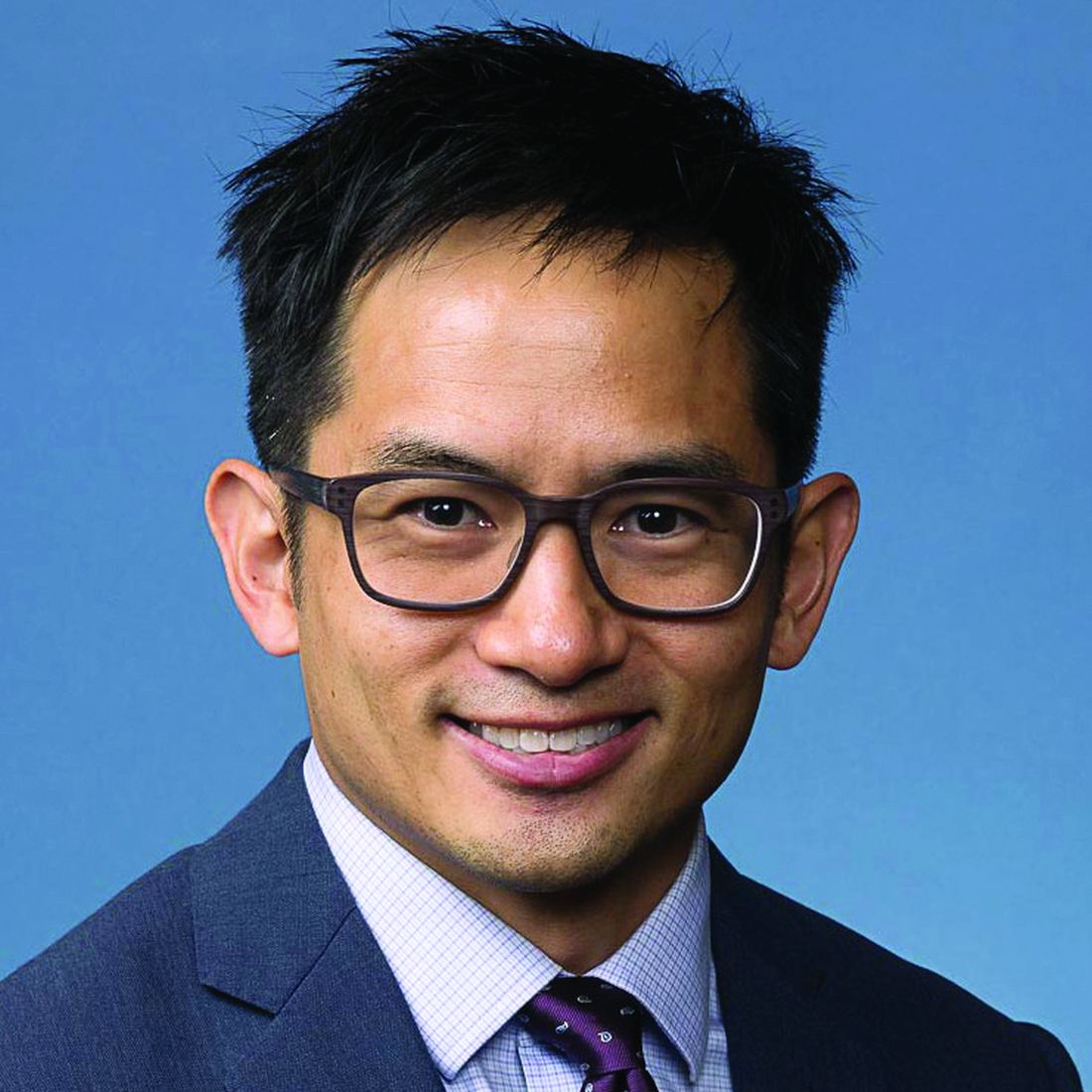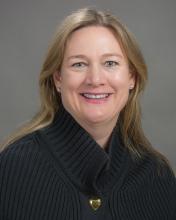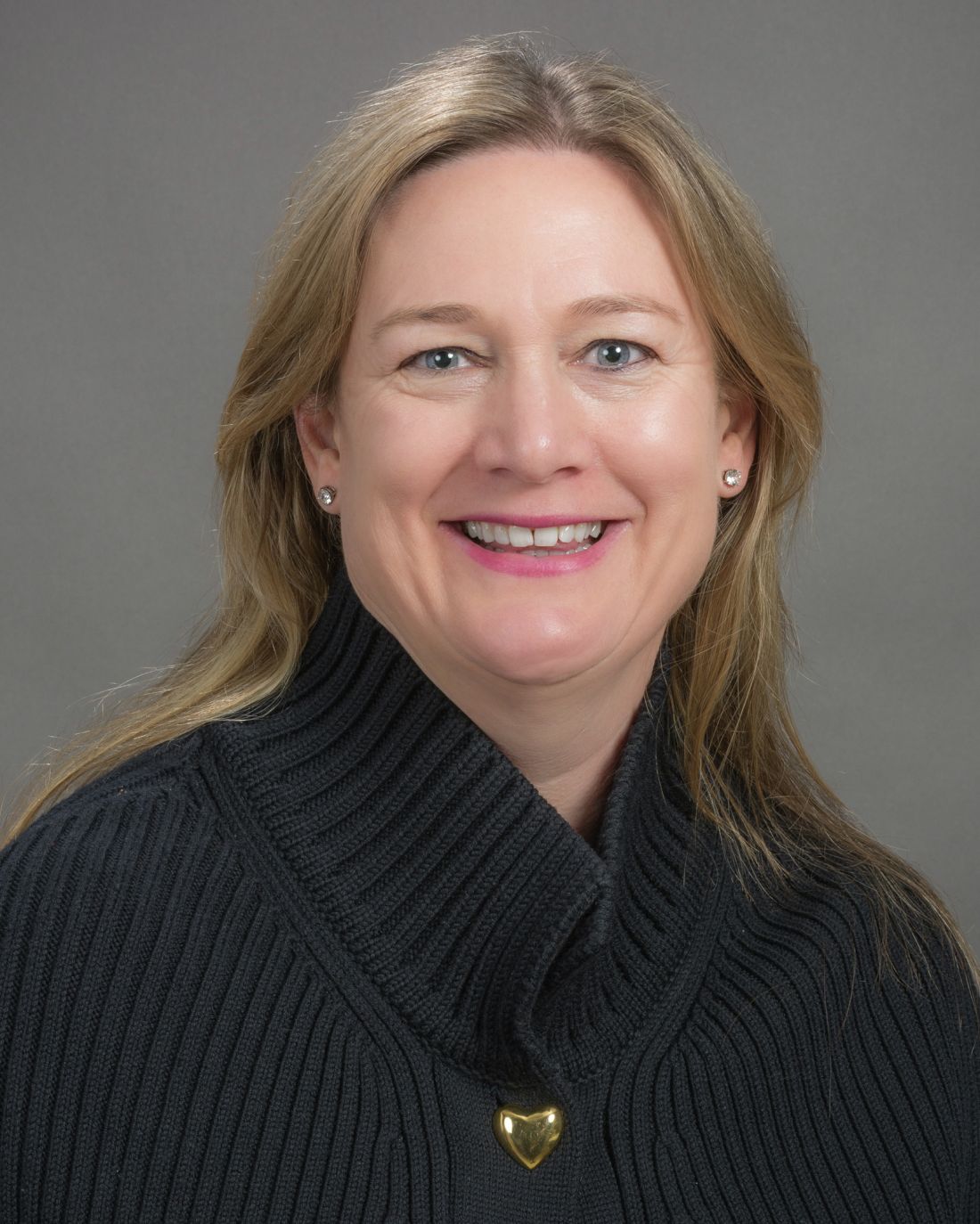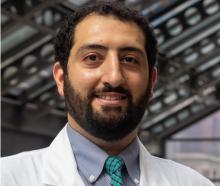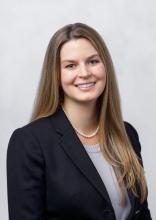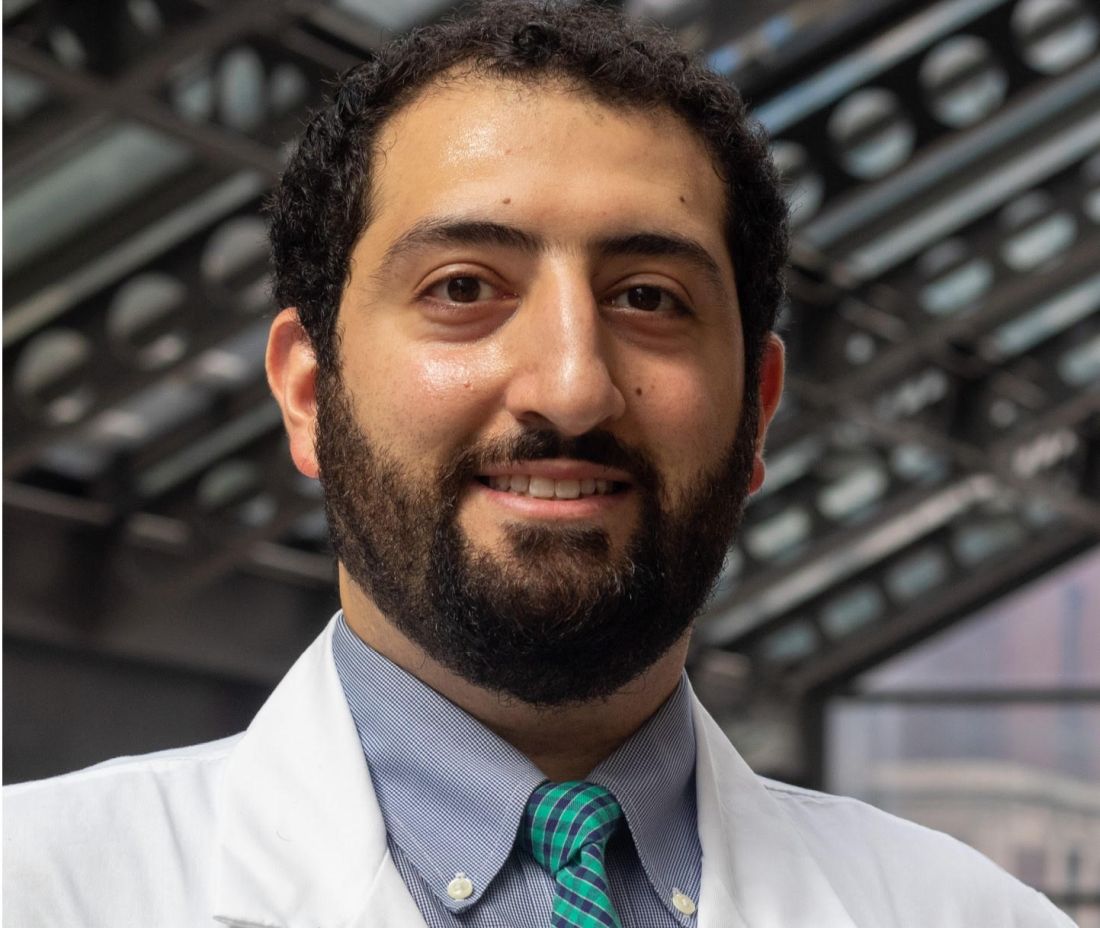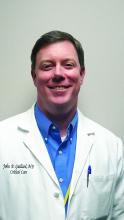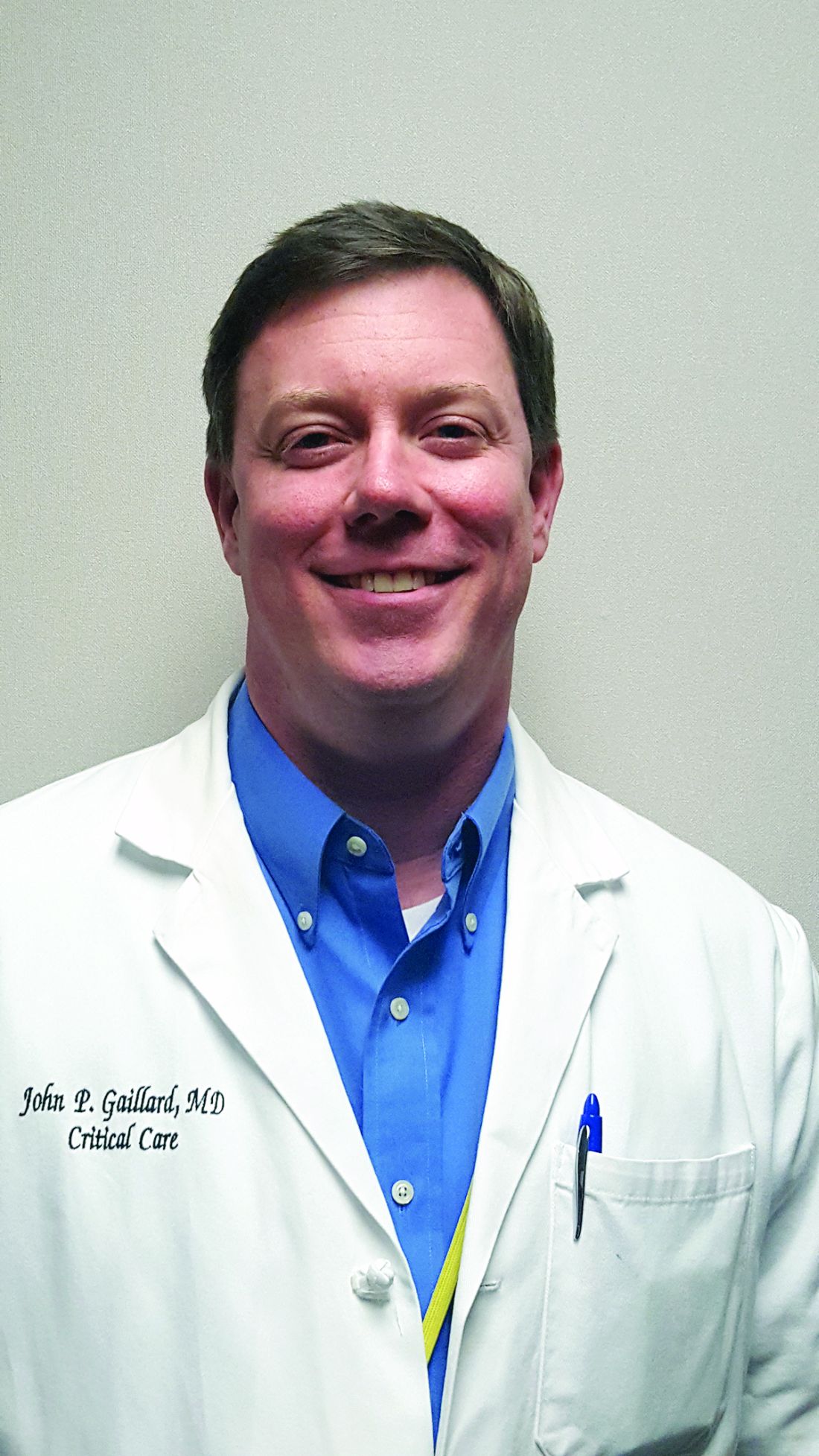User login
Updates in evidence for rituximab in interstitial lung disease
DIFFUSE LUNG DISEASE AND LUNG TRANSPLANT NETWORK
Interstitial Lung Disease Section
Interstitial lung diseases (ILD) are a heterogeneous group of fibro-inflammatory disorders that can be progressive despite available therapies. The cornerstones of pharmacologic therapy include immunosuppression and antifibrotics.
Data on the use of rituximab, a B-lymphocyte-depleting monoclonal antibody, often utilized as rescue therapy in progressive and severe ILD, was limited until recently. The RECITAL trial reported the first randomized controlled trial investigating rituximab in severe or progressive autoimmune ILD. Though rituximab was not superior to cyclophosphamide, both agents improved forced vital capacity (FVC) at 24 weeks and respiratory-related quality of life. Rituximab was associated with less adverse events and lower corticosteroid exposure (Maher et al. Lancet Respir Med. 2023;11:45-54). In the DESIRES trial, patients with systemic sclerosis-associated ILD treated with rituximab had preservation of FVC at 24 and 48 weeks compared to placebo (Ebata et al. Lancet Rheumatol. 2021;3:e489-97; Lancet Rheumatol. 2022;4:e546-55). The EVER-ILD investigators compared mycophenolate mofetil (MMF) alone vs addition of rituximab in patients with autoimmune and idiopathic nonspecific interstitial pneumonia (NSIP). Combination therapy was superior to MMF alone in improving FVC and progression-free survival. Combination regimen was well tolerated though nonserious viral and bacterial infections were more frequent (Mankikian et al. Eur Respir J. 2023;61[6]:2202071).
These findings, primarily in autoimmune ILD, are promising and provide clinicians with evidence for utilizing rituximab in patients with severe and progressive ILD. Nonetheless, they highlight the need for additional research and standardized guidance regarding the target population who stands to most benefit from rituximab.
–Tessy K. Paul, MD
Section Member-at-Large
–Tejaswini Kulkarni, MD, MBBS, FCCP
Section Chair
DIFFUSE LUNG DISEASE AND LUNG TRANSPLANT NETWORK
Interstitial Lung Disease Section
Interstitial lung diseases (ILD) are a heterogeneous group of fibro-inflammatory disorders that can be progressive despite available therapies. The cornerstones of pharmacologic therapy include immunosuppression and antifibrotics.
Data on the use of rituximab, a B-lymphocyte-depleting monoclonal antibody, often utilized as rescue therapy in progressive and severe ILD, was limited until recently. The RECITAL trial reported the first randomized controlled trial investigating rituximab in severe or progressive autoimmune ILD. Though rituximab was not superior to cyclophosphamide, both agents improved forced vital capacity (FVC) at 24 weeks and respiratory-related quality of life. Rituximab was associated with less adverse events and lower corticosteroid exposure (Maher et al. Lancet Respir Med. 2023;11:45-54). In the DESIRES trial, patients with systemic sclerosis-associated ILD treated with rituximab had preservation of FVC at 24 and 48 weeks compared to placebo (Ebata et al. Lancet Rheumatol. 2021;3:e489-97; Lancet Rheumatol. 2022;4:e546-55). The EVER-ILD investigators compared mycophenolate mofetil (MMF) alone vs addition of rituximab in patients with autoimmune and idiopathic nonspecific interstitial pneumonia (NSIP). Combination therapy was superior to MMF alone in improving FVC and progression-free survival. Combination regimen was well tolerated though nonserious viral and bacterial infections were more frequent (Mankikian et al. Eur Respir J. 2023;61[6]:2202071).
These findings, primarily in autoimmune ILD, are promising and provide clinicians with evidence for utilizing rituximab in patients with severe and progressive ILD. Nonetheless, they highlight the need for additional research and standardized guidance regarding the target population who stands to most benefit from rituximab.
–Tessy K. Paul, MD
Section Member-at-Large
–Tejaswini Kulkarni, MD, MBBS, FCCP
Section Chair
DIFFUSE LUNG DISEASE AND LUNG TRANSPLANT NETWORK
Interstitial Lung Disease Section
Interstitial lung diseases (ILD) are a heterogeneous group of fibro-inflammatory disorders that can be progressive despite available therapies. The cornerstones of pharmacologic therapy include immunosuppression and antifibrotics.
Data on the use of rituximab, a B-lymphocyte-depleting monoclonal antibody, often utilized as rescue therapy in progressive and severe ILD, was limited until recently. The RECITAL trial reported the first randomized controlled trial investigating rituximab in severe or progressive autoimmune ILD. Though rituximab was not superior to cyclophosphamide, both agents improved forced vital capacity (FVC) at 24 weeks and respiratory-related quality of life. Rituximab was associated with less adverse events and lower corticosteroid exposure (Maher et al. Lancet Respir Med. 2023;11:45-54). In the DESIRES trial, patients with systemic sclerosis-associated ILD treated with rituximab had preservation of FVC at 24 and 48 weeks compared to placebo (Ebata et al. Lancet Rheumatol. 2021;3:e489-97; Lancet Rheumatol. 2022;4:e546-55). The EVER-ILD investigators compared mycophenolate mofetil (MMF) alone vs addition of rituximab in patients with autoimmune and idiopathic nonspecific interstitial pneumonia (NSIP). Combination therapy was superior to MMF alone in improving FVC and progression-free survival. Combination regimen was well tolerated though nonserious viral and bacterial infections were more frequent (Mankikian et al. Eur Respir J. 2023;61[6]:2202071).
These findings, primarily in autoimmune ILD, are promising and provide clinicians with evidence for utilizing rituximab in patients with severe and progressive ILD. Nonetheless, they highlight the need for additional research and standardized guidance regarding the target population who stands to most benefit from rituximab.
–Tessy K. Paul, MD
Section Member-at-Large
–Tejaswini Kulkarni, MD, MBBS, FCCP
Section Chair
The emergence of postgraduate training programs for APPs in pulmonary and critical care
APP Intersection
Postgraduate training for advanced practice providers (APPs) has existed in one form or another since the genesis of the allied professions. They are typically referred to as residencies, fellowships, postgraduate programs, and transition-to-practice.
The desire and necessity for these programs has increased in the past decade with workforce changes; namely the increasing number of nurse practitioners (NPs) graduating with fewer years of experience at the bedside compared with previous eras, a similar decrease in patient contact hours for graduating PAs, the transition of physician colleagues from employers to employees and the subsequent change in priorities in training new graduate APPs, and resident work hour restrictions necessitating more APPs to staff inpatient units and work in various specialties.
The goal of these programs is to provide postgraduate training to physician assistants/associates (PAs) and NPs across myriad medical specialties to both newly graduated APPs and those looking to transition specialties. Current programs exist in family medicine, emergency medicine, urgent care, critical care medicine, pulmonary medicine, oncology, surgery, and various surgical subspecialties, to name a few. Program length is highly variable, though most programs advertise as lasting around 12 months, with varying ratios of clinical and didactic education. Postgraduate APP programs are largely advertise as salaried, benefitted positions, though usually at a rate below that of a so-called “direct hire” due to the protected learning time associated with the postgraduate training year.
Accreditation for these programs is still disjointed, although unifying efforts have been made as of late, and is currently available through the Advanced Practice Provider Fellowship Accreditation, Association of Postgraduate Physician Assistant Programs, ARC-PA, the Accreditation Commission for Education in Nursing, and the Consortium for Advanced Practice Providers. Other organizations, such as the Association of Post Graduate APRN Programs, host regular conferences to discuss the formulation of postgraduate APP education curricula and program development.
While accreditation offers guidance for fledgling programs, many utilize the standards published by the American College of Graduate Medical Education to ensure that appropriate clinical milestones are being met and that a common language among APPs and physicians who are involved in the evaluation of the postgraduate APP trainee is being used. Programs also seek to utilize other well-established curricula and certification programs published by various national and international organizations. A key distinction from physician postgraduate training is that there is currently no fiscal or legislative support for postgraduate APP programs; these issues have been cited as reasons for the limited scope and number of programs.
When starting APP Fellowship programs, it is important to consider why this would be beneficial to a specific division and health care organization. Usually, fellowship programs develop out of a need to train and retain APPs. It is no secret that turnover and retention of skilled APPs is a nationwide problem associated with significant costs to organizations. The ability to retain fellowship-trained APPs will result in cost savings due to the reduction in onboarding time and orientation costs, as these APP fellows finish their programs ready to be fully productive team members.
Additional considerations for the development of an APP fellowship include improving access to care and increasing the quality of the care provided. Fellowship programs encourage a smoother transition to practice by offering more support through education, closer evaluation, and frequent feedback, which improves competence and confidence of these providers. A supported APP is more likely to practice to the fullest extent of their license and have improved personal and professional satisfaction, leading to employee retention and better patient care.
When developing a budget for these types of programs, it is important to include the full-time equivalent (FTE) for the fellow, benefits, onboarding/licensure, simulations, and fellowship faculty costs.
Faculty compensation varies by institution but can include salary support, FTE reduction, and nonclinical appointments. Tracking metrics such as fellow billing, length of stay, and access to care during the fellowship year are helpful to highlight the benefit of these programs to the organization.
Initiating a program like those described may seem like a Herculean feat, but motivated individuals have been able to accomplish similar goals in both adequately and poorly resourced areas. For those aspiring to start a postgraduate APP program at their instruction, these authors suggest the following approach.
First, identify your institution’s need for such a program. Next, define your curriculum, evaluation process, and expectations. Then, create buy-in from stakeholders, including administrative and clinical personnel. Finally, focus on recruitment. Seeking accreditation may be challenging for new programs, but identifying the accreditation standard you plan to pursue early will pay dividends when the time comes for the program to apply. Those starting down this path should realistically expect an 18- to 24-month period between their first efforts and the start of the first class.
“APP Intersection” is a new quarterly column focusing on areas of interest for the entire chest medicine health care team.
APP Intersection
Postgraduate training for advanced practice providers (APPs) has existed in one form or another since the genesis of the allied professions. They are typically referred to as residencies, fellowships, postgraduate programs, and transition-to-practice.
The desire and necessity for these programs has increased in the past decade with workforce changes; namely the increasing number of nurse practitioners (NPs) graduating with fewer years of experience at the bedside compared with previous eras, a similar decrease in patient contact hours for graduating PAs, the transition of physician colleagues from employers to employees and the subsequent change in priorities in training new graduate APPs, and resident work hour restrictions necessitating more APPs to staff inpatient units and work in various specialties.
The goal of these programs is to provide postgraduate training to physician assistants/associates (PAs) and NPs across myriad medical specialties to both newly graduated APPs and those looking to transition specialties. Current programs exist in family medicine, emergency medicine, urgent care, critical care medicine, pulmonary medicine, oncology, surgery, and various surgical subspecialties, to name a few. Program length is highly variable, though most programs advertise as lasting around 12 months, with varying ratios of clinical and didactic education. Postgraduate APP programs are largely advertise as salaried, benefitted positions, though usually at a rate below that of a so-called “direct hire” due to the protected learning time associated with the postgraduate training year.
Accreditation for these programs is still disjointed, although unifying efforts have been made as of late, and is currently available through the Advanced Practice Provider Fellowship Accreditation, Association of Postgraduate Physician Assistant Programs, ARC-PA, the Accreditation Commission for Education in Nursing, and the Consortium for Advanced Practice Providers. Other organizations, such as the Association of Post Graduate APRN Programs, host regular conferences to discuss the formulation of postgraduate APP education curricula and program development.
While accreditation offers guidance for fledgling programs, many utilize the standards published by the American College of Graduate Medical Education to ensure that appropriate clinical milestones are being met and that a common language among APPs and physicians who are involved in the evaluation of the postgraduate APP trainee is being used. Programs also seek to utilize other well-established curricula and certification programs published by various national and international organizations. A key distinction from physician postgraduate training is that there is currently no fiscal or legislative support for postgraduate APP programs; these issues have been cited as reasons for the limited scope and number of programs.
When starting APP Fellowship programs, it is important to consider why this would be beneficial to a specific division and health care organization. Usually, fellowship programs develop out of a need to train and retain APPs. It is no secret that turnover and retention of skilled APPs is a nationwide problem associated with significant costs to organizations. The ability to retain fellowship-trained APPs will result in cost savings due to the reduction in onboarding time and orientation costs, as these APP fellows finish their programs ready to be fully productive team members.
Additional considerations for the development of an APP fellowship include improving access to care and increasing the quality of the care provided. Fellowship programs encourage a smoother transition to practice by offering more support through education, closer evaluation, and frequent feedback, which improves competence and confidence of these providers. A supported APP is more likely to practice to the fullest extent of their license and have improved personal and professional satisfaction, leading to employee retention and better patient care.
When developing a budget for these types of programs, it is important to include the full-time equivalent (FTE) for the fellow, benefits, onboarding/licensure, simulations, and fellowship faculty costs.
Faculty compensation varies by institution but can include salary support, FTE reduction, and nonclinical appointments. Tracking metrics such as fellow billing, length of stay, and access to care during the fellowship year are helpful to highlight the benefit of these programs to the organization.
Initiating a program like those described may seem like a Herculean feat, but motivated individuals have been able to accomplish similar goals in both adequately and poorly resourced areas. For those aspiring to start a postgraduate APP program at their instruction, these authors suggest the following approach.
First, identify your institution’s need for such a program. Next, define your curriculum, evaluation process, and expectations. Then, create buy-in from stakeholders, including administrative and clinical personnel. Finally, focus on recruitment. Seeking accreditation may be challenging for new programs, but identifying the accreditation standard you plan to pursue early will pay dividends when the time comes for the program to apply. Those starting down this path should realistically expect an 18- to 24-month period between their first efforts and the start of the first class.
“APP Intersection” is a new quarterly column focusing on areas of interest for the entire chest medicine health care team.
APP Intersection
Postgraduate training for advanced practice providers (APPs) has existed in one form or another since the genesis of the allied professions. They are typically referred to as residencies, fellowships, postgraduate programs, and transition-to-practice.
The desire and necessity for these programs has increased in the past decade with workforce changes; namely the increasing number of nurse practitioners (NPs) graduating with fewer years of experience at the bedside compared with previous eras, a similar decrease in patient contact hours for graduating PAs, the transition of physician colleagues from employers to employees and the subsequent change in priorities in training new graduate APPs, and resident work hour restrictions necessitating more APPs to staff inpatient units and work in various specialties.
The goal of these programs is to provide postgraduate training to physician assistants/associates (PAs) and NPs across myriad medical specialties to both newly graduated APPs and those looking to transition specialties. Current programs exist in family medicine, emergency medicine, urgent care, critical care medicine, pulmonary medicine, oncology, surgery, and various surgical subspecialties, to name a few. Program length is highly variable, though most programs advertise as lasting around 12 months, with varying ratios of clinical and didactic education. Postgraduate APP programs are largely advertise as salaried, benefitted positions, though usually at a rate below that of a so-called “direct hire” due to the protected learning time associated with the postgraduate training year.
Accreditation for these programs is still disjointed, although unifying efforts have been made as of late, and is currently available through the Advanced Practice Provider Fellowship Accreditation, Association of Postgraduate Physician Assistant Programs, ARC-PA, the Accreditation Commission for Education in Nursing, and the Consortium for Advanced Practice Providers. Other organizations, such as the Association of Post Graduate APRN Programs, host regular conferences to discuss the formulation of postgraduate APP education curricula and program development.
While accreditation offers guidance for fledgling programs, many utilize the standards published by the American College of Graduate Medical Education to ensure that appropriate clinical milestones are being met and that a common language among APPs and physicians who are involved in the evaluation of the postgraduate APP trainee is being used. Programs also seek to utilize other well-established curricula and certification programs published by various national and international organizations. A key distinction from physician postgraduate training is that there is currently no fiscal or legislative support for postgraduate APP programs; these issues have been cited as reasons for the limited scope and number of programs.
When starting APP Fellowship programs, it is important to consider why this would be beneficial to a specific division and health care organization. Usually, fellowship programs develop out of a need to train and retain APPs. It is no secret that turnover and retention of skilled APPs is a nationwide problem associated with significant costs to organizations. The ability to retain fellowship-trained APPs will result in cost savings due to the reduction in onboarding time and orientation costs, as these APP fellows finish their programs ready to be fully productive team members.
Additional considerations for the development of an APP fellowship include improving access to care and increasing the quality of the care provided. Fellowship programs encourage a smoother transition to practice by offering more support through education, closer evaluation, and frequent feedback, which improves competence and confidence of these providers. A supported APP is more likely to practice to the fullest extent of their license and have improved personal and professional satisfaction, leading to employee retention and better patient care.
When developing a budget for these types of programs, it is important to include the full-time equivalent (FTE) for the fellow, benefits, onboarding/licensure, simulations, and fellowship faculty costs.
Faculty compensation varies by institution but can include salary support, FTE reduction, and nonclinical appointments. Tracking metrics such as fellow billing, length of stay, and access to care during the fellowship year are helpful to highlight the benefit of these programs to the organization.
Initiating a program like those described may seem like a Herculean feat, but motivated individuals have been able to accomplish similar goals in both adequately and poorly resourced areas. For those aspiring to start a postgraduate APP program at their instruction, these authors suggest the following approach.
First, identify your institution’s need for such a program. Next, define your curriculum, evaluation process, and expectations. Then, create buy-in from stakeholders, including administrative and clinical personnel. Finally, focus on recruitment. Seeking accreditation may be challenging for new programs, but identifying the accreditation standard you plan to pursue early will pay dividends when the time comes for the program to apply. Those starting down this path should realistically expect an 18- to 24-month period between their first efforts and the start of the first class.
“APP Intersection” is a new quarterly column focusing on areas of interest for the entire chest medicine health care team.
BCBSMA Rolls Back Restrictive Anesthesia Policy
In a significant victory for patients and healthcare providers, . The change is retroactive to Jan. 1, 2024, so no claims will be rejected for payment.
The decision follows intense advocacy efforts by a coalition that included AGA, the American Society of Anesthesiologists (ASA), and the American College of Surgeons (ACS), with the Massachusetts Gastroenterology Association demonstrating exceptional leadership and the Massachusetts Society of Anesthesiologists (MSA) persevering throughout the process. The BCBSMA heeded the coalition’s warnings about the potential impact on cancer screening access and patient choice in GI care.
Physician leaders representing the societies played a crucial role in meetings with BCBSMA, contributing to this positive outcome. Member engagement, including contacting legislators, media outreach, and participation in the #Noto154 campaign, had a substantial impact.
BCBSMA informed the societies that all claims will be paid; however, documentation will still be required for patients presenting with ASA 1 and ASA 2. Providers may download a list of commonly used diagnosis codes documented with the administration of propofol. The AGA encourages members to still be mindful that BCBSMA will be monitoring the use of these codes for propofol administration. Members can see BCBSMA policy 154 for the complete list of diagnosis codes that support use of MAC. The societies have requested that BCBSMA provide education to providers on this requirement.
The AGA intends to closely monitor developments to ensure similar policies are not introduced nationally.
In a significant victory for patients and healthcare providers, . The change is retroactive to Jan. 1, 2024, so no claims will be rejected for payment.
The decision follows intense advocacy efforts by a coalition that included AGA, the American Society of Anesthesiologists (ASA), and the American College of Surgeons (ACS), with the Massachusetts Gastroenterology Association demonstrating exceptional leadership and the Massachusetts Society of Anesthesiologists (MSA) persevering throughout the process. The BCBSMA heeded the coalition’s warnings about the potential impact on cancer screening access and patient choice in GI care.
Physician leaders representing the societies played a crucial role in meetings with BCBSMA, contributing to this positive outcome. Member engagement, including contacting legislators, media outreach, and participation in the #Noto154 campaign, had a substantial impact.
BCBSMA informed the societies that all claims will be paid; however, documentation will still be required for patients presenting with ASA 1 and ASA 2. Providers may download a list of commonly used diagnosis codes documented with the administration of propofol. The AGA encourages members to still be mindful that BCBSMA will be monitoring the use of these codes for propofol administration. Members can see BCBSMA policy 154 for the complete list of diagnosis codes that support use of MAC. The societies have requested that BCBSMA provide education to providers on this requirement.
The AGA intends to closely monitor developments to ensure similar policies are not introduced nationally.
In a significant victory for patients and healthcare providers, . The change is retroactive to Jan. 1, 2024, so no claims will be rejected for payment.
The decision follows intense advocacy efforts by a coalition that included AGA, the American Society of Anesthesiologists (ASA), and the American College of Surgeons (ACS), with the Massachusetts Gastroenterology Association demonstrating exceptional leadership and the Massachusetts Society of Anesthesiologists (MSA) persevering throughout the process. The BCBSMA heeded the coalition’s warnings about the potential impact on cancer screening access and patient choice in GI care.
Physician leaders representing the societies played a crucial role in meetings with BCBSMA, contributing to this positive outcome. Member engagement, including contacting legislators, media outreach, and participation in the #Noto154 campaign, had a substantial impact.
BCBSMA informed the societies that all claims will be paid; however, documentation will still be required for patients presenting with ASA 1 and ASA 2. Providers may download a list of commonly used diagnosis codes documented with the administration of propofol. The AGA encourages members to still be mindful that BCBSMA will be monitoring the use of these codes for propofol administration. Members can see BCBSMA policy 154 for the complete list of diagnosis codes that support use of MAC. The societies have requested that BCBSMA provide education to providers on this requirement.
The AGA intends to closely monitor developments to ensure similar policies are not introduced nationally.
AGA updates polypectomy guidance
The new guidance document, authored by Andrew P. Copland, MD, of the University of Virginia Health System, Charlottesville, and colleagues, includes 12 pieces of best practice advice pertaining to polyp removal, including the need for evaluation, considerations for selecting a resection strategy, and reasons for referral.
“Polypectomy techniques are continually evolving with improvements in the ability to assess polyps for high-risk features and with development of appropriate procedures for complete and safe polyp resection,” the authors wrote in Clinical Gastroenterology and Hepatology. “This clinical practice update provides guidance in characterizing polyps and choosing appropriate polypectomy techniques for polyps 2 cm or less in size, which comprise most polyps encountered by most endoscopists.”
To begin, they advised a “structured visual assessment using high-definition white light and/or electronic chromoendoscopy and with photodocumentation” for all polyps identified during routine colonoscopy, with close attention to any features suggesting submucosal invasion.
Next, in a series of statements, the guidance document steers appropriate use of various cold and hot polypectomy techniques.
Cold snare polypectomy should be used for polyps less than 10 mm in size, while cold forceps may be considered for polyps 1-3 mm in diameter. Cold resection techniques should also be used for serrated polyps, with use of submucosal injection, if needed, for polyps greater than 10 mm with unclear margins.
For polyps of intermediate size (10-19 mm), both cold and hot snare polypectomy should be considered, alongside endoscopic mucosal resection for polyps, Dr. Copland and colleagues wrote, noting that hot snare polypectomy should be used for removal of pedunculated lesions greater than 10 mm in size.
In contrast, the update advises against use of hot forceps polypectomy in any scenario.
“Hot forceps polypectomy for diminutive and small polyps is associated with higher incomplete polyp removal rates compared with cold snare polypectomy,” the update panelists wrote. “It is also associated with higher risks of postpolypectomy hemorrhage, particularly in the right colon with higher risks of deep thermal injury. Therefore, the use of hot forceps polypectomy is discouraged.”
In another best practice advice statement, the panelists advised against routine use of clips to close resection sites for polyps less than 20 mm. For larger polyps, they advised “selective use” of clips, most suitably in the proximal colon.
Alternatively, patients with polyps at least 20 mm in size should be considered for referral to endoscopic referral centers, along with patients who have polyps in “challenging” locations, and those with a recurrent polyp at a prior polypectomy site.
Patients with nonpedunculated polyps that exhibit “clear evidence of submucosally invasive cancer” should be referred for surgical evaluation, they added. On a similar note, the update advises tattooing lesions that may need to be located at a future surgery or endoscopy.
Finally, Dr. Copland and colleagues advised all endoscopists to understand appropriate selection of electrosurgical generator settings for various polypectomy or postpolypectomy thermal techniques.
“Ongoing research will allow further tailoring of polypectomy techniques to improve patient outcomes,” they concluded.This clinical practice update was commissioned and approved by the AGA Institute. The working group disclosed relationships with Olympus, Boston Scientific, GIE Medical, and others.
The new guidance document, authored by Andrew P. Copland, MD, of the University of Virginia Health System, Charlottesville, and colleagues, includes 12 pieces of best practice advice pertaining to polyp removal, including the need for evaluation, considerations for selecting a resection strategy, and reasons for referral.
“Polypectomy techniques are continually evolving with improvements in the ability to assess polyps for high-risk features and with development of appropriate procedures for complete and safe polyp resection,” the authors wrote in Clinical Gastroenterology and Hepatology. “This clinical practice update provides guidance in characterizing polyps and choosing appropriate polypectomy techniques for polyps 2 cm or less in size, which comprise most polyps encountered by most endoscopists.”
To begin, they advised a “structured visual assessment using high-definition white light and/or electronic chromoendoscopy and with photodocumentation” for all polyps identified during routine colonoscopy, with close attention to any features suggesting submucosal invasion.
Next, in a series of statements, the guidance document steers appropriate use of various cold and hot polypectomy techniques.
Cold snare polypectomy should be used for polyps less than 10 mm in size, while cold forceps may be considered for polyps 1-3 mm in diameter. Cold resection techniques should also be used for serrated polyps, with use of submucosal injection, if needed, for polyps greater than 10 mm with unclear margins.
For polyps of intermediate size (10-19 mm), both cold and hot snare polypectomy should be considered, alongside endoscopic mucosal resection for polyps, Dr. Copland and colleagues wrote, noting that hot snare polypectomy should be used for removal of pedunculated lesions greater than 10 mm in size.
In contrast, the update advises against use of hot forceps polypectomy in any scenario.
“Hot forceps polypectomy for diminutive and small polyps is associated with higher incomplete polyp removal rates compared with cold snare polypectomy,” the update panelists wrote. “It is also associated with higher risks of postpolypectomy hemorrhage, particularly in the right colon with higher risks of deep thermal injury. Therefore, the use of hot forceps polypectomy is discouraged.”
In another best practice advice statement, the panelists advised against routine use of clips to close resection sites for polyps less than 20 mm. For larger polyps, they advised “selective use” of clips, most suitably in the proximal colon.
Alternatively, patients with polyps at least 20 mm in size should be considered for referral to endoscopic referral centers, along with patients who have polyps in “challenging” locations, and those with a recurrent polyp at a prior polypectomy site.
Patients with nonpedunculated polyps that exhibit “clear evidence of submucosally invasive cancer” should be referred for surgical evaluation, they added. On a similar note, the update advises tattooing lesions that may need to be located at a future surgery or endoscopy.
Finally, Dr. Copland and colleagues advised all endoscopists to understand appropriate selection of electrosurgical generator settings for various polypectomy or postpolypectomy thermal techniques.
“Ongoing research will allow further tailoring of polypectomy techniques to improve patient outcomes,” they concluded.This clinical practice update was commissioned and approved by the AGA Institute. The working group disclosed relationships with Olympus, Boston Scientific, GIE Medical, and others.
The new guidance document, authored by Andrew P. Copland, MD, of the University of Virginia Health System, Charlottesville, and colleagues, includes 12 pieces of best practice advice pertaining to polyp removal, including the need for evaluation, considerations for selecting a resection strategy, and reasons for referral.
“Polypectomy techniques are continually evolving with improvements in the ability to assess polyps for high-risk features and with development of appropriate procedures for complete and safe polyp resection,” the authors wrote in Clinical Gastroenterology and Hepatology. “This clinical practice update provides guidance in characterizing polyps and choosing appropriate polypectomy techniques for polyps 2 cm or less in size, which comprise most polyps encountered by most endoscopists.”
To begin, they advised a “structured visual assessment using high-definition white light and/or electronic chromoendoscopy and with photodocumentation” for all polyps identified during routine colonoscopy, with close attention to any features suggesting submucosal invasion.
Next, in a series of statements, the guidance document steers appropriate use of various cold and hot polypectomy techniques.
Cold snare polypectomy should be used for polyps less than 10 mm in size, while cold forceps may be considered for polyps 1-3 mm in diameter. Cold resection techniques should also be used for serrated polyps, with use of submucosal injection, if needed, for polyps greater than 10 mm with unclear margins.
For polyps of intermediate size (10-19 mm), both cold and hot snare polypectomy should be considered, alongside endoscopic mucosal resection for polyps, Dr. Copland and colleagues wrote, noting that hot snare polypectomy should be used for removal of pedunculated lesions greater than 10 mm in size.
In contrast, the update advises against use of hot forceps polypectomy in any scenario.
“Hot forceps polypectomy for diminutive and small polyps is associated with higher incomplete polyp removal rates compared with cold snare polypectomy,” the update panelists wrote. “It is also associated with higher risks of postpolypectomy hemorrhage, particularly in the right colon with higher risks of deep thermal injury. Therefore, the use of hot forceps polypectomy is discouraged.”
In another best practice advice statement, the panelists advised against routine use of clips to close resection sites for polyps less than 20 mm. For larger polyps, they advised “selective use” of clips, most suitably in the proximal colon.
Alternatively, patients with polyps at least 20 mm in size should be considered for referral to endoscopic referral centers, along with patients who have polyps in “challenging” locations, and those with a recurrent polyp at a prior polypectomy site.
Patients with nonpedunculated polyps that exhibit “clear evidence of submucosally invasive cancer” should be referred for surgical evaluation, they added. On a similar note, the update advises tattooing lesions that may need to be located at a future surgery or endoscopy.
Finally, Dr. Copland and colleagues advised all endoscopists to understand appropriate selection of electrosurgical generator settings for various polypectomy or postpolypectomy thermal techniques.
“Ongoing research will allow further tailoring of polypectomy techniques to improve patient outcomes,” they concluded.This clinical practice update was commissioned and approved by the AGA Institute. The working group disclosed relationships with Olympus, Boston Scientific, GIE Medical, and others.
FROM CLINICAL GASTROENTEROLOGY AND HEPATOLOGY
AGA Research Scholar Awards Advance the GI Field
AGA’s flagship award is the Research Scholar Award, which provides career development support for young investigators in gastroenterology and hepatology research. In the last 10 years, the AGA Research Foundation has funded 63 young scientists through a Research Scholar Award grant.
“I want to express my sincere gratitude to the AGA Research Foundation and its benefactors. At this fragile and critical juncture, this AGA Research Scholar Award offers an unmatched opportunity to pursue the type of high-impact scientific work that allows a junior investigator such as myself to achieve the necessary momentum to create a nationally competitive research program,” states Alexander , MD, PhD, the Regent of the University of California, Los Angeles, 2023 AGA Research Scholar Award recipient.
Funded by the generosity of donors, the AGA Research Foundation’s research award program ensures that we are building a community of researchers whose work serves the greater community and benefits all our patients.
By joining others in supporting the AGA Research Foundation, you will ensure that young researchers have opportunities to continue their life-saving work. Your tax-deductible contribution supports the foundation’s research award program, including the Research Scholar Award, which ensures that studies are funded, discoveries are made, and patients are treated. Learn more or make a contribution at www.foundation.gastro.org.
AGA’s flagship award is the Research Scholar Award, which provides career development support for young investigators in gastroenterology and hepatology research. In the last 10 years, the AGA Research Foundation has funded 63 young scientists through a Research Scholar Award grant.
“I want to express my sincere gratitude to the AGA Research Foundation and its benefactors. At this fragile and critical juncture, this AGA Research Scholar Award offers an unmatched opportunity to pursue the type of high-impact scientific work that allows a junior investigator such as myself to achieve the necessary momentum to create a nationally competitive research program,” states Alexander , MD, PhD, the Regent of the University of California, Los Angeles, 2023 AGA Research Scholar Award recipient.
Funded by the generosity of donors, the AGA Research Foundation’s research award program ensures that we are building a community of researchers whose work serves the greater community and benefits all our patients.
By joining others in supporting the AGA Research Foundation, you will ensure that young researchers have opportunities to continue their life-saving work. Your tax-deductible contribution supports the foundation’s research award program, including the Research Scholar Award, which ensures that studies are funded, discoveries are made, and patients are treated. Learn more or make a contribution at www.foundation.gastro.org.
AGA’s flagship award is the Research Scholar Award, which provides career development support for young investigators in gastroenterology and hepatology research. In the last 10 years, the AGA Research Foundation has funded 63 young scientists through a Research Scholar Award grant.
“I want to express my sincere gratitude to the AGA Research Foundation and its benefactors. At this fragile and critical juncture, this AGA Research Scholar Award offers an unmatched opportunity to pursue the type of high-impact scientific work that allows a junior investigator such as myself to achieve the necessary momentum to create a nationally competitive research program,” states Alexander , MD, PhD, the Regent of the University of California, Los Angeles, 2023 AGA Research Scholar Award recipient.
Funded by the generosity of donors, the AGA Research Foundation’s research award program ensures that we are building a community of researchers whose work serves the greater community and benefits all our patients.
By joining others in supporting the AGA Research Foundation, you will ensure that young researchers have opportunities to continue their life-saving work. Your tax-deductible contribution supports the foundation’s research award program, including the Research Scholar Award, which ensures that studies are funded, discoveries are made, and patients are treated. Learn more or make a contribution at www.foundation.gastro.org.
Win! CMS reins in prior authorization
According to a rule issued by CMS, starting in 2026, health plans must decide on prior authorization requests within 72 hours for an expedited request or 7 days for non-urgent appeals.
The rule also requires plans to provide a detailed rationale for a denial and include metrics on denials and approvals.
AGA and our allies in the physician community have aggressively advocated that Congress and the Administration address prior auth, which slows patient access to care and contributes to physician burnout.
The rule applies to Medicare, Medicare Advantage (MA), Medicaid, Children’s Health Insurance Plans (CHIP), and qualified health plans on the exchange.
Thank you to our advocates who called on policymakers to take action to ensure patients receive care in a timely manner.
According to a rule issued by CMS, starting in 2026, health plans must decide on prior authorization requests within 72 hours for an expedited request or 7 days for non-urgent appeals.
The rule also requires plans to provide a detailed rationale for a denial and include metrics on denials and approvals.
AGA and our allies in the physician community have aggressively advocated that Congress and the Administration address prior auth, which slows patient access to care and contributes to physician burnout.
The rule applies to Medicare, Medicare Advantage (MA), Medicaid, Children’s Health Insurance Plans (CHIP), and qualified health plans on the exchange.
Thank you to our advocates who called on policymakers to take action to ensure patients receive care in a timely manner.
According to a rule issued by CMS, starting in 2026, health plans must decide on prior authorization requests within 72 hours for an expedited request or 7 days for non-urgent appeals.
The rule also requires plans to provide a detailed rationale for a denial and include metrics on denials and approvals.
AGA and our allies in the physician community have aggressively advocated that Congress and the Administration address prior auth, which slows patient access to care and contributes to physician burnout.
The rule applies to Medicare, Medicare Advantage (MA), Medicaid, Children’s Health Insurance Plans (CHIP), and qualified health plans on the exchange.
Thank you to our advocates who called on policymakers to take action to ensure patients receive care in a timely manner.
AGA sharpens focus on women
“Women continue to face unique barriers to leadership including gender bias, lack of role models, maternal discrimination, and lack of equal consideration for opportunities,” notes AGA President Barbara Jung, MD, AGAF. “AGA sits in a unique position where we can influence changes in academia and practice to improve the field for all women and particularly enhance women leaders.”
A tangible way AGA supports female leadership and career advancement is the Women in GI Regional Workshops. Throughout 2024, these workshops provide opportunities for networking, business and financial education training, burnout prevention strategies, and career advice.
Bigger picture, AGA’s Gender Equity Framework paints a compelling vision for the future in six domains:
- Bias & gender disparities: Academic institutions, healthcare systems, and practices establish regular systems of equity reviews and eradicate institutional gender disparities and bias.
- Leadership & career advancement: Equitable access to leadership in the field and professional GI societies for the benefit of medicine, research, and patient care.
- Wellness & balance: Women in GI experience balanced integration of family, work, community, health, and professional growth.
- Retention & recruitment: GI is the leading specialty for women in medicine and a sustainable career where women grow and thrive.
- Mentorship & sponsorship: The benefits of mentorship and sponsorship are universally recognized and incentivized in GI institutions and practices.
- Recognition: Equitable recognition of the achievements and contributions of women in GI.
In the coming years, AGA committees will collaborate with the AGA Women’s Committee to achieve the vision laid out in the AGA Gender Equity Framework. Thank you to the AGA Women’s Committee, which created the framework, under the leadership of chair Aimee Lucas, MD, MS, AGAF, and within the auspices of the AGA Equity Project (gastro.org/equity).
“Women continue to face unique barriers to leadership including gender bias, lack of role models, maternal discrimination, and lack of equal consideration for opportunities,” notes AGA President Barbara Jung, MD, AGAF. “AGA sits in a unique position where we can influence changes in academia and practice to improve the field for all women and particularly enhance women leaders.”
A tangible way AGA supports female leadership and career advancement is the Women in GI Regional Workshops. Throughout 2024, these workshops provide opportunities for networking, business and financial education training, burnout prevention strategies, and career advice.
Bigger picture, AGA’s Gender Equity Framework paints a compelling vision for the future in six domains:
- Bias & gender disparities: Academic institutions, healthcare systems, and practices establish regular systems of equity reviews and eradicate institutional gender disparities and bias.
- Leadership & career advancement: Equitable access to leadership in the field and professional GI societies for the benefit of medicine, research, and patient care.
- Wellness & balance: Women in GI experience balanced integration of family, work, community, health, and professional growth.
- Retention & recruitment: GI is the leading specialty for women in medicine and a sustainable career where women grow and thrive.
- Mentorship & sponsorship: The benefits of mentorship and sponsorship are universally recognized and incentivized in GI institutions and practices.
- Recognition: Equitable recognition of the achievements and contributions of women in GI.
In the coming years, AGA committees will collaborate with the AGA Women’s Committee to achieve the vision laid out in the AGA Gender Equity Framework. Thank you to the AGA Women’s Committee, which created the framework, under the leadership of chair Aimee Lucas, MD, MS, AGAF, and within the auspices of the AGA Equity Project (gastro.org/equity).
“Women continue to face unique barriers to leadership including gender bias, lack of role models, maternal discrimination, and lack of equal consideration for opportunities,” notes AGA President Barbara Jung, MD, AGAF. “AGA sits in a unique position where we can influence changes in academia and practice to improve the field for all women and particularly enhance women leaders.”
A tangible way AGA supports female leadership and career advancement is the Women in GI Regional Workshops. Throughout 2024, these workshops provide opportunities for networking, business and financial education training, burnout prevention strategies, and career advice.
Bigger picture, AGA’s Gender Equity Framework paints a compelling vision for the future in six domains:
- Bias & gender disparities: Academic institutions, healthcare systems, and practices establish regular systems of equity reviews and eradicate institutional gender disparities and bias.
- Leadership & career advancement: Equitable access to leadership in the field and professional GI societies for the benefit of medicine, research, and patient care.
- Wellness & balance: Women in GI experience balanced integration of family, work, community, health, and professional growth.
- Retention & recruitment: GI is the leading specialty for women in medicine and a sustainable career where women grow and thrive.
- Mentorship & sponsorship: The benefits of mentorship and sponsorship are universally recognized and incentivized in GI institutions and practices.
- Recognition: Equitable recognition of the achievements and contributions of women in GI.
In the coming years, AGA committees will collaborate with the AGA Women’s Committee to achieve the vision laid out in the AGA Gender Equity Framework. Thank you to the AGA Women’s Committee, which created the framework, under the leadership of chair Aimee Lucas, MD, MS, AGAF, and within the auspices of the AGA Equity Project (gastro.org/equity).
AGA members save on registration for DDW® 2024
, the world’s largest and most comprehensive gathering of gastroenterology clinicians, researchers and industry. Registration and housing are now open, and AGA members can save up to $380 on registration fees. Discounted registration rates are also available through the March 13 early bird deadline. AGA member trainees, students, residents and postdoctoral fellows can register for free through this date. Visit ddw.org/register to join us.
This year, DDW takes place May 18-21, in Washington, D.C., and online. Whether you work in patient care, research, training or academia, you’ll find content tailored to your essential role at every step.
Add on to your DDW experience with AGA’s one-day Postgraduate Course. Join us on May 18, from D.C. or online, to explore challenging patient cases, high-impact papers, and important practice updates that you can use immediately upon your return to the clinic. Learn more at pgcourse.gastro.org.
, the world’s largest and most comprehensive gathering of gastroenterology clinicians, researchers and industry. Registration and housing are now open, and AGA members can save up to $380 on registration fees. Discounted registration rates are also available through the March 13 early bird deadline. AGA member trainees, students, residents and postdoctoral fellows can register for free through this date. Visit ddw.org/register to join us.
This year, DDW takes place May 18-21, in Washington, D.C., and online. Whether you work in patient care, research, training or academia, you’ll find content tailored to your essential role at every step.
Add on to your DDW experience with AGA’s one-day Postgraduate Course. Join us on May 18, from D.C. or online, to explore challenging patient cases, high-impact papers, and important practice updates that you can use immediately upon your return to the clinic. Learn more at pgcourse.gastro.org.
, the world’s largest and most comprehensive gathering of gastroenterology clinicians, researchers and industry. Registration and housing are now open, and AGA members can save up to $380 on registration fees. Discounted registration rates are also available through the March 13 early bird deadline. AGA member trainees, students, residents and postdoctoral fellows can register for free through this date. Visit ddw.org/register to join us.
This year, DDW takes place May 18-21, in Washington, D.C., and online. Whether you work in patient care, research, training or academia, you’ll find content tailored to your essential role at every step.
Add on to your DDW experience with AGA’s one-day Postgraduate Course. Join us on May 18, from D.C. or online, to explore challenging patient cases, high-impact papers, and important practice updates that you can use immediately upon your return to the clinic. Learn more at pgcourse.gastro.org.
CHEST grant winners to study health inequities related to air pollution, medication nonadherence, and more
In 2023, CHEST awarded $300,000 in clinical research and community impact grants to 15 individuals. Grant recipients are recognized for their scientifically meritorious achievements, with rigorous metrics to track their project’s progress, and have innovative, novel approaches to addressing their research topic.
CHEST grants have made a difference in patients’ lives by leading to breakthroughs in the treatment and/or management of chest diseases and patient care. This year’s grant-funded projects run the gamut of topics within chest medicine, ranging from lung cancer and COPD to tuberculosis and idiopathic pulmonary fibrosis.
Here’s a glimpse into two of this year’s grant winners and their projects.
For a full list of the 2023 grant winners, visit chestnet.org/grant-recipients.
Air pollution in sarcoidosis
This year, the John R. Addrizzo, MD, FCCP Research Grant in Sarcoidosis was awarded to Ali Mustafa, MD, of the Johns Hopkins Hospital in Baltimore, MD, for his project “Air Pollution in Sarcoidosis.”
The project’s aim is to investigate the feasibility of studying indoor and outdoor air pollution in patients with pulmonary sarcoidosis.
According to Dr. Mustafa’s application, pulmonary sarcoidosis is one of the most common interstitial lung diseases in the United States, and mortality due to sarcoidosis has risen by more than 3% in recent decades.
While the etiology of sarcoidosis remains elusive, evidence points toward a combination of genetic predisposition with external environmental triggers affecting disease onset. One small study of 16 individuals with fibrotic pulmonary sarcoidosis assessed the association between local levels of outdoor air pollutants to clinical outcomes. This study found that increased short-term exposure was associated with increased respiratory symptom severity and worse health-related quality of life.
Additionally, significant health disparities exist in sarcoidosis. Black individuals with sarcoidosis have worse pulmonary function, higher rates of multiorgan disease, and as much as a 12-fold increase in mortality compared with non-Hispanic White individuals with sarcoidosis. Socioeconomic status and Black race have also been associated with increased exposure to air pollution and closer proximity to high toxic emission facilities, suggesting higher exposure to outdoor air pollution.
Racial disparities are present and particularly important in sarcoidosis. Black individuals are more likely to have more advanced disease at diagnosis, have a six-fold increase in hospitalization, and a 12-fold increase in mortality compared with non-Hispanic White individuals with sarcoidosis. Little is known about the drivers of these disparities; however, environmental exposure has been implicated in sarcoidosis pathogenesis and incidence and may be an important contributor.
Dr. Mustafa’s preliminary work suggests disparities in exposure to air pollution among individuals with sarcoidosis may be contributing to inequities in clinical outcomes.
Determinants of medication non-adherence among adults with chronic obstructive pulmonary disease
The CHEST/ALA/ATS Respiratory Health Equity Research Award was given to Stephanie LaBedz, MD, of the University of Illinois Chicago. The Respiratory Health Equity Research Award is jointly supported by the American Lung Association, the American Thoracic Society, and CHEST.
Dr. LaBedz’s project, “Determinants of Medication Non-Adherence Among Adults With Chronic Obstructive Pulmonary Disease,” aims to use behavioral science theory to identify barriers and facilitators to COPD medication adherence.
Studies suggest racial minorities and individuals of low socioeconomic status (SES) are less likely to be adherent to COPD medications compared with White and high SES patients with COPD. Interventions designed to improve COPD medication adherence must address barriers to adherence experienced by these groups to avoid perpetuating disparities in adherence and downstream outcomes disparities.
For her project, Dr. LaBedz will focus on examining barriers and facilitators of COPD medication adherence, including social determinants of health and other structural barriers faced by these vulnerable populations. She will use the information gained from the qualitative study to design interventions that address the barriers to adherence faced by these groups.
Her long-term goal is to improve COPD medication adherence in vulnerable patients with COPD in order to improve the health status and reduce health disparities experienced by racial/ethnic minority and low SES patients with COPD.
In 2023, CHEST awarded $300,000 in clinical research and community impact grants to 15 individuals. Grant recipients are recognized for their scientifically meritorious achievements, with rigorous metrics to track their project’s progress, and have innovative, novel approaches to addressing their research topic.
CHEST grants have made a difference in patients’ lives by leading to breakthroughs in the treatment and/or management of chest diseases and patient care. This year’s grant-funded projects run the gamut of topics within chest medicine, ranging from lung cancer and COPD to tuberculosis and idiopathic pulmonary fibrosis.
Here’s a glimpse into two of this year’s grant winners and their projects.
For a full list of the 2023 grant winners, visit chestnet.org/grant-recipients.
Air pollution in sarcoidosis
This year, the John R. Addrizzo, MD, FCCP Research Grant in Sarcoidosis was awarded to Ali Mustafa, MD, of the Johns Hopkins Hospital in Baltimore, MD, for his project “Air Pollution in Sarcoidosis.”
The project’s aim is to investigate the feasibility of studying indoor and outdoor air pollution in patients with pulmonary sarcoidosis.
According to Dr. Mustafa’s application, pulmonary sarcoidosis is one of the most common interstitial lung diseases in the United States, and mortality due to sarcoidosis has risen by more than 3% in recent decades.
While the etiology of sarcoidosis remains elusive, evidence points toward a combination of genetic predisposition with external environmental triggers affecting disease onset. One small study of 16 individuals with fibrotic pulmonary sarcoidosis assessed the association between local levels of outdoor air pollutants to clinical outcomes. This study found that increased short-term exposure was associated with increased respiratory symptom severity and worse health-related quality of life.
Additionally, significant health disparities exist in sarcoidosis. Black individuals with sarcoidosis have worse pulmonary function, higher rates of multiorgan disease, and as much as a 12-fold increase in mortality compared with non-Hispanic White individuals with sarcoidosis. Socioeconomic status and Black race have also been associated with increased exposure to air pollution and closer proximity to high toxic emission facilities, suggesting higher exposure to outdoor air pollution.
Racial disparities are present and particularly important in sarcoidosis. Black individuals are more likely to have more advanced disease at diagnosis, have a six-fold increase in hospitalization, and a 12-fold increase in mortality compared with non-Hispanic White individuals with sarcoidosis. Little is known about the drivers of these disparities; however, environmental exposure has been implicated in sarcoidosis pathogenesis and incidence and may be an important contributor.
Dr. Mustafa’s preliminary work suggests disparities in exposure to air pollution among individuals with sarcoidosis may be contributing to inequities in clinical outcomes.
Determinants of medication non-adherence among adults with chronic obstructive pulmonary disease
The CHEST/ALA/ATS Respiratory Health Equity Research Award was given to Stephanie LaBedz, MD, of the University of Illinois Chicago. The Respiratory Health Equity Research Award is jointly supported by the American Lung Association, the American Thoracic Society, and CHEST.
Dr. LaBedz’s project, “Determinants of Medication Non-Adherence Among Adults With Chronic Obstructive Pulmonary Disease,” aims to use behavioral science theory to identify barriers and facilitators to COPD medication adherence.
Studies suggest racial minorities and individuals of low socioeconomic status (SES) are less likely to be adherent to COPD medications compared with White and high SES patients with COPD. Interventions designed to improve COPD medication adherence must address barriers to adherence experienced by these groups to avoid perpetuating disparities in adherence and downstream outcomes disparities.
For her project, Dr. LaBedz will focus on examining barriers and facilitators of COPD medication adherence, including social determinants of health and other structural barriers faced by these vulnerable populations. She will use the information gained from the qualitative study to design interventions that address the barriers to adherence faced by these groups.
Her long-term goal is to improve COPD medication adherence in vulnerable patients with COPD in order to improve the health status and reduce health disparities experienced by racial/ethnic minority and low SES patients with COPD.
In 2023, CHEST awarded $300,000 in clinical research and community impact grants to 15 individuals. Grant recipients are recognized for their scientifically meritorious achievements, with rigorous metrics to track their project’s progress, and have innovative, novel approaches to addressing their research topic.
CHEST grants have made a difference in patients’ lives by leading to breakthroughs in the treatment and/or management of chest diseases and patient care. This year’s grant-funded projects run the gamut of topics within chest medicine, ranging from lung cancer and COPD to tuberculosis and idiopathic pulmonary fibrosis.
Here’s a glimpse into two of this year’s grant winners and their projects.
For a full list of the 2023 grant winners, visit chestnet.org/grant-recipients.
Air pollution in sarcoidosis
This year, the John R. Addrizzo, MD, FCCP Research Grant in Sarcoidosis was awarded to Ali Mustafa, MD, of the Johns Hopkins Hospital in Baltimore, MD, for his project “Air Pollution in Sarcoidosis.”
The project’s aim is to investigate the feasibility of studying indoor and outdoor air pollution in patients with pulmonary sarcoidosis.
According to Dr. Mustafa’s application, pulmonary sarcoidosis is one of the most common interstitial lung diseases in the United States, and mortality due to sarcoidosis has risen by more than 3% in recent decades.
While the etiology of sarcoidosis remains elusive, evidence points toward a combination of genetic predisposition with external environmental triggers affecting disease onset. One small study of 16 individuals with fibrotic pulmonary sarcoidosis assessed the association between local levels of outdoor air pollutants to clinical outcomes. This study found that increased short-term exposure was associated with increased respiratory symptom severity and worse health-related quality of life.
Additionally, significant health disparities exist in sarcoidosis. Black individuals with sarcoidosis have worse pulmonary function, higher rates of multiorgan disease, and as much as a 12-fold increase in mortality compared with non-Hispanic White individuals with sarcoidosis. Socioeconomic status and Black race have also been associated with increased exposure to air pollution and closer proximity to high toxic emission facilities, suggesting higher exposure to outdoor air pollution.
Racial disparities are present and particularly important in sarcoidosis. Black individuals are more likely to have more advanced disease at diagnosis, have a six-fold increase in hospitalization, and a 12-fold increase in mortality compared with non-Hispanic White individuals with sarcoidosis. Little is known about the drivers of these disparities; however, environmental exposure has been implicated in sarcoidosis pathogenesis and incidence and may be an important contributor.
Dr. Mustafa’s preliminary work suggests disparities in exposure to air pollution among individuals with sarcoidosis may be contributing to inequities in clinical outcomes.
Determinants of medication non-adherence among adults with chronic obstructive pulmonary disease
The CHEST/ALA/ATS Respiratory Health Equity Research Award was given to Stephanie LaBedz, MD, of the University of Illinois Chicago. The Respiratory Health Equity Research Award is jointly supported by the American Lung Association, the American Thoracic Society, and CHEST.
Dr. LaBedz’s project, “Determinants of Medication Non-Adherence Among Adults With Chronic Obstructive Pulmonary Disease,” aims to use behavioral science theory to identify barriers and facilitators to COPD medication adherence.
Studies suggest racial minorities and individuals of low socioeconomic status (SES) are less likely to be adherent to COPD medications compared with White and high SES patients with COPD. Interventions designed to improve COPD medication adherence must address barriers to adherence experienced by these groups to avoid perpetuating disparities in adherence and downstream outcomes disparities.
For her project, Dr. LaBedz will focus on examining barriers and facilitators of COPD medication adherence, including social determinants of health and other structural barriers faced by these vulnerable populations. She will use the information gained from the qualitative study to design interventions that address the barriers to adherence faced by these groups.
Her long-term goal is to improve COPD medication adherence in vulnerable patients with COPD in order to improve the health status and reduce health disparities experienced by racial/ethnic minority and low SES patients with COPD.
Should intensivists place PEG tubes in critically ill patients?
The practice of initiating early and adequate nutrition in critically ill patients is a cornerstone of ICU management. Adequate nutrition combats the dangerous catabolic state that accompanies critical illness. A few of the benefits of this practice are a decrease in disease severity with resultant lessened hospital and ICU lengths of stay, reduced infection rates, and a decrease in hospital mortality. Enteral nutrition (EN) is the route of nutritional support most associated with safe and effective provision of enhanced immunologic function and the ability to preserve the patient’s lean body mass while avoiding metabolic and infectious complications.
Since its inception in 1980, percutaneous endoscopic gastrostomy (PEG) tubes have become the preferred method for delivering EN in ICUs across the United States. When comparing PEG and nasogastric tubes (NGTs), evidence shows reduced bleeding events, less tube dislodgement, and decreased tube obstructions with a faster rate of recovery of previous swallowing function that prevents delays in medical care and increased mortality rate. Although PEG tubes do not entirely prevent acid reflux or aspiration events, they are positively correlated to significantly reduced rates of both which result in a survival benefit seen in a 2012 study (Psychiatry Clin Neurosci. 2012 Aug;66[5]:418).
The majority of PEG tubes placed in the United States has unquestionably shifted to the ICU patient population since 2014 according to the largest health care database search on this topic published in 2019 (Ann Am Thorac Soc. 2019 Jun;16[6]:724). The safety and efficacy of this procedure has only improved, yet the delayed timing of placement remains problematic and often exceeds what is medically necessary or financially feasible.
To understand this issue, it is important to consider that despite intensivists being globally recognized as procedurally sound with enhanced ultrasound expertise, their endoscopic experience is usually limited to bronchoscopy without formal training in upper gastrointestinal endoscopy. This is the leading theory to explain why intensivists are performing their own percutaneous tracheostomies but not gastrostomies. Fortunately, the FDA-approved Point of Care Ultrasound Magnet Aligned Gastrostomy (PUMA-G) System has shown analogous safety and efficacy when compared with the traditional endoscopically placed PEG tube technique (J Intensive Care Med. 2022 May;37[5]:641).
A case series was published in 2021 that included three intensivists who underwent a 3-hour cadaver-based training course for the PUMA-G System with a mandatory minimum successful placement of three gastric tubes (J Clin Ultrasound. 2021 Jan;49[1]:28). Once they demonstrated competence in the technique, the procedure was performed on mechanically ventilated and sedated patients without any reported complications peri-procedurally or over the next 30 days. The evidence that intensivists can use their current skillset to rapidly become competent in this ultrasound-guided bedside procedure is without question.
PEG tube placement by intensivists is a procedure that will undoubtedly benefit patients in the ICU and assist in offloading the operation costs of a significant number of critical care units and their associated organizations. This is an area ripe for growth with further education and research.
The practice of initiating early and adequate nutrition in critically ill patients is a cornerstone of ICU management. Adequate nutrition combats the dangerous catabolic state that accompanies critical illness. A few of the benefits of this practice are a decrease in disease severity with resultant lessened hospital and ICU lengths of stay, reduced infection rates, and a decrease in hospital mortality. Enteral nutrition (EN) is the route of nutritional support most associated with safe and effective provision of enhanced immunologic function and the ability to preserve the patient’s lean body mass while avoiding metabolic and infectious complications.
Since its inception in 1980, percutaneous endoscopic gastrostomy (PEG) tubes have become the preferred method for delivering EN in ICUs across the United States. When comparing PEG and nasogastric tubes (NGTs), evidence shows reduced bleeding events, less tube dislodgement, and decreased tube obstructions with a faster rate of recovery of previous swallowing function that prevents delays in medical care and increased mortality rate. Although PEG tubes do not entirely prevent acid reflux or aspiration events, they are positively correlated to significantly reduced rates of both which result in a survival benefit seen in a 2012 study (Psychiatry Clin Neurosci. 2012 Aug;66[5]:418).
The majority of PEG tubes placed in the United States has unquestionably shifted to the ICU patient population since 2014 according to the largest health care database search on this topic published in 2019 (Ann Am Thorac Soc. 2019 Jun;16[6]:724). The safety and efficacy of this procedure has only improved, yet the delayed timing of placement remains problematic and often exceeds what is medically necessary or financially feasible.
To understand this issue, it is important to consider that despite intensivists being globally recognized as procedurally sound with enhanced ultrasound expertise, their endoscopic experience is usually limited to bronchoscopy without formal training in upper gastrointestinal endoscopy. This is the leading theory to explain why intensivists are performing their own percutaneous tracheostomies but not gastrostomies. Fortunately, the FDA-approved Point of Care Ultrasound Magnet Aligned Gastrostomy (PUMA-G) System has shown analogous safety and efficacy when compared with the traditional endoscopically placed PEG tube technique (J Intensive Care Med. 2022 May;37[5]:641).
A case series was published in 2021 that included three intensivists who underwent a 3-hour cadaver-based training course for the PUMA-G System with a mandatory minimum successful placement of three gastric tubes (J Clin Ultrasound. 2021 Jan;49[1]:28). Once they demonstrated competence in the technique, the procedure was performed on mechanically ventilated and sedated patients without any reported complications peri-procedurally or over the next 30 days. The evidence that intensivists can use their current skillset to rapidly become competent in this ultrasound-guided bedside procedure is without question.
PEG tube placement by intensivists is a procedure that will undoubtedly benefit patients in the ICU and assist in offloading the operation costs of a significant number of critical care units and their associated organizations. This is an area ripe for growth with further education and research.
The practice of initiating early and adequate nutrition in critically ill patients is a cornerstone of ICU management. Adequate nutrition combats the dangerous catabolic state that accompanies critical illness. A few of the benefits of this practice are a decrease in disease severity with resultant lessened hospital and ICU lengths of stay, reduced infection rates, and a decrease in hospital mortality. Enteral nutrition (EN) is the route of nutritional support most associated with safe and effective provision of enhanced immunologic function and the ability to preserve the patient’s lean body mass while avoiding metabolic and infectious complications.
Since its inception in 1980, percutaneous endoscopic gastrostomy (PEG) tubes have become the preferred method for delivering EN in ICUs across the United States. When comparing PEG and nasogastric tubes (NGTs), evidence shows reduced bleeding events, less tube dislodgement, and decreased tube obstructions with a faster rate of recovery of previous swallowing function that prevents delays in medical care and increased mortality rate. Although PEG tubes do not entirely prevent acid reflux or aspiration events, they are positively correlated to significantly reduced rates of both which result in a survival benefit seen in a 2012 study (Psychiatry Clin Neurosci. 2012 Aug;66[5]:418).
The majority of PEG tubes placed in the United States has unquestionably shifted to the ICU patient population since 2014 according to the largest health care database search on this topic published in 2019 (Ann Am Thorac Soc. 2019 Jun;16[6]:724). The safety and efficacy of this procedure has only improved, yet the delayed timing of placement remains problematic and often exceeds what is medically necessary or financially feasible.
To understand this issue, it is important to consider that despite intensivists being globally recognized as procedurally sound with enhanced ultrasound expertise, their endoscopic experience is usually limited to bronchoscopy without formal training in upper gastrointestinal endoscopy. This is the leading theory to explain why intensivists are performing their own percutaneous tracheostomies but not gastrostomies. Fortunately, the FDA-approved Point of Care Ultrasound Magnet Aligned Gastrostomy (PUMA-G) System has shown analogous safety and efficacy when compared with the traditional endoscopically placed PEG tube technique (J Intensive Care Med. 2022 May;37[5]:641).
A case series was published in 2021 that included three intensivists who underwent a 3-hour cadaver-based training course for the PUMA-G System with a mandatory minimum successful placement of three gastric tubes (J Clin Ultrasound. 2021 Jan;49[1]:28). Once they demonstrated competence in the technique, the procedure was performed on mechanically ventilated and sedated patients without any reported complications peri-procedurally or over the next 30 days. The evidence that intensivists can use their current skillset to rapidly become competent in this ultrasound-guided bedside procedure is without question.
PEG tube placement by intensivists is a procedure that will undoubtedly benefit patients in the ICU and assist in offloading the operation costs of a significant number of critical care units and their associated organizations. This is an area ripe for growth with further education and research.

